Why are the lymph nodes in my armpit swollen. Swollen Lymph Nodes in Armpit: Causes, Symptoms, and Treatment Options
What causes swollen lymph nodes in the armpit. How to identify enlarged lymph nodes. When should you be concerned about swollen lymph nodes in your armpit. What are the treatment options for swollen armpit lymph nodes.
Understanding Lymph Nodes and Their Function
Lymph nodes are small, bean-shaped structures that play a crucial role in our immune system. They act as filters, trapping harmful substances and storing white blood cells called lymphocytes. These lymphocytes are essential for fighting diseases and infections. While lymph nodes are distributed throughout the body, they are particularly concentrated in areas such as the neck, armpits, chest, abdomen, and groin.
Are lymph nodes always visible? Not necessarily. A slightly enlarged lymph node in the armpit may not be visible but can often be felt with your fingers. However, when there’s a serious infection or condition, one or more nodes may swell to the point where you can see a lump under your skin.

Locating Swollen Lymph Nodes in the Armpit
To check for swollen lymph nodes in your armpit:
- Lift your arm slightly
- Gently place your fingers into your armpit
- Press against the center of the armpit
- Move your fingers around the front and back of the armpit along the chest wall
- Repeat on the other side for comparison
Remember, lymph nodes typically exist in pairs on each side of the body. Usually, only one node in a pair will be swollen, making it easier to detect by comparing both sides.
Common Causes of Swollen Lymph Nodes in the Armpit
Swollen lymph nodes in the armpit can be attributed to various factors. Understanding these causes can help you determine when to seek medical attention and what treatment options might be appropriate.
Viral Infections
Viral infections are among the most common causes of swollen lymph nodes in the armpit. Which viruses are typically responsible? Common culprits include:
- Influenza (flu)
- Common cold
- Mononucleosis
- Herpes
- Rubella
- HIV
These infections may cause lymph nodes in both the armpit and neck to enlarge. How are viral infections typically treated? In many cases, rest, fluids, and time are sufficient for your immune system to fight off the virus. However, for certain viral infections like HIV, antiviral medications may be necessary.

Bacterial Infections
Bacterial infections, particularly those affecting the arm or surrounding chest wall, can lead to enlarged lymph nodes in the armpit. Common bacterial culprits include staphylococcus and streptococcus. What’s the typical treatment for bacterial infections causing swollen lymph nodes? Antibiotics and rest are usually effective in overcoming these infections.
Immune System Disorders and Their Impact on Lymph Nodes
Autoimmune disorders can cause temporary enlargement of lymph nodes in the armpit during flare-ups. Which autoimmune conditions are most likely to affect lymph nodes? Lupus and rheumatoid arthritis are common examples. How are these conditions managed when causing lymph node swelling? Treatments vary depending on the specific disorder but may include anti-inflammatory medications, pain relievers, and in severe cases, immunosuppressant drugs.
Cancer and Swollen Lymph Nodes: What You Need to Know
While less common, certain types of cancer can directly involve the lymphatic system and cause swollen lymph nodes. Which cancers are most associated with lymph node swelling?

- Lymphoma: This cancer originates in the lymph glands
- Leukemia: A cancer of blood cells that can cause inflammation and swelling of lymph nodes
- Breast cancer: Can cause swelling of lymph nodes in the armpit
An enlarged lymph node near a cancerous tumor is often suspected of also being cancerous. How is cancer-related lymph node swelling treated? Cancer treatments vary and may include chemotherapy, radiation therapy, surgery, and other approaches.
Medications That Can Cause Lymph Node Swelling
In rare cases, certain medications can lead to swollen lymph nodes. Which medications are known to potentially cause this side effect?
- ACE inhibitors, beta blockers, and vasodilators used to treat high blood pressure
- Anticonvulsant drugs, including phenytoin and primidone
- Anti-malarial drugs, such as quinine
- Uric acid reducers, like allopurinol
If medication is causing lymph node swelling, what can be done? Switching medications or adjusting doses may be sufficient to reduce this side effect.
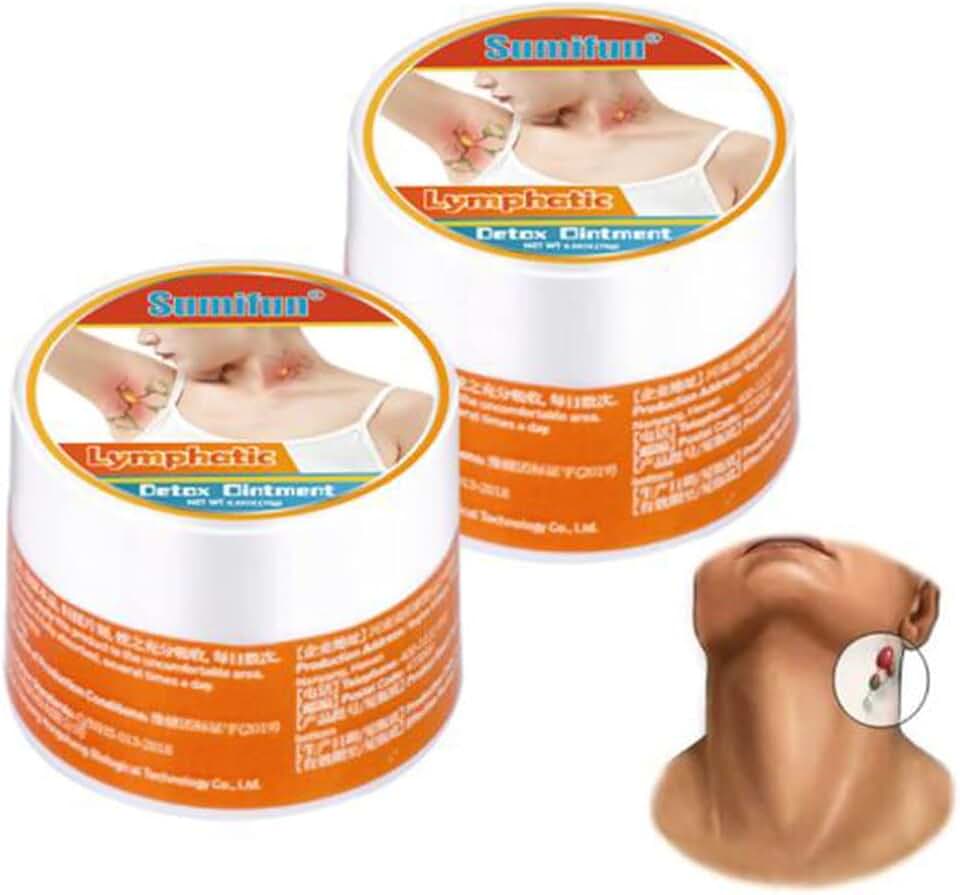
Diagnosing the Cause of Swollen Lymph Nodes
When faced with swollen lymph nodes in the armpit, how do healthcare professionals determine the cause? The diagnostic process typically involves several steps:
- Medical history: Your doctor will ask about your symptoms, recent illnesses, and any medications you’re taking.
- Physical examination: This includes feeling the affected lymph nodes and checking for other signs of illness.
- Blood tests: These can help identify infections, autoimmune disorders, or certain cancers.
- Imaging tests: X-rays, CT scans, or MRIs may be used to get a closer look at the lymph nodes and surrounding tissues.
- Biopsy: In some cases, a small sample of the lymph node may be removed for laboratory analysis.
What factors do doctors consider when evaluating swollen lymph nodes? Size, consistency, location, and whether the nodes are painful or tender are all important considerations.
Treatment Options for Swollen Lymph Nodes in the Armpit
The treatment for swollen lymph nodes in the armpit depends on the underlying cause. What are some common treatment approaches?

Watchful Waiting
For mild cases, especially those caused by viral infections, watchful waiting may be recommended. How long should you wait before seeking further medical attention? If the swelling persists for more than two weeks or is accompanied by other concerning symptoms, consult your healthcare provider.
Medications
Depending on the cause, various medications may be prescribed. What types of medications are commonly used?
- Antibiotics for bacterial infections
- Antiviral drugs for certain viral infections
- Anti-inflammatory medications for autoimmune disorders
- Pain relievers for discomfort
Home Remedies
Are there any home remedies that can help with swollen lymph nodes? While not a substitute for medical treatment, some people find relief with:
- Warm compresses to reduce pain and swelling
- Over-the-counter pain relievers like ibuprofen or acetaminophen
- Rest and adequate hydration to support the immune system
Treatment for Underlying Conditions
In cases where the swollen lymph nodes are a symptom of a more serious condition, treatment will focus on addressing the underlying cause. This may involve specialized treatments such as chemotherapy for cancer or immunosuppressants for autoimmune disorders.
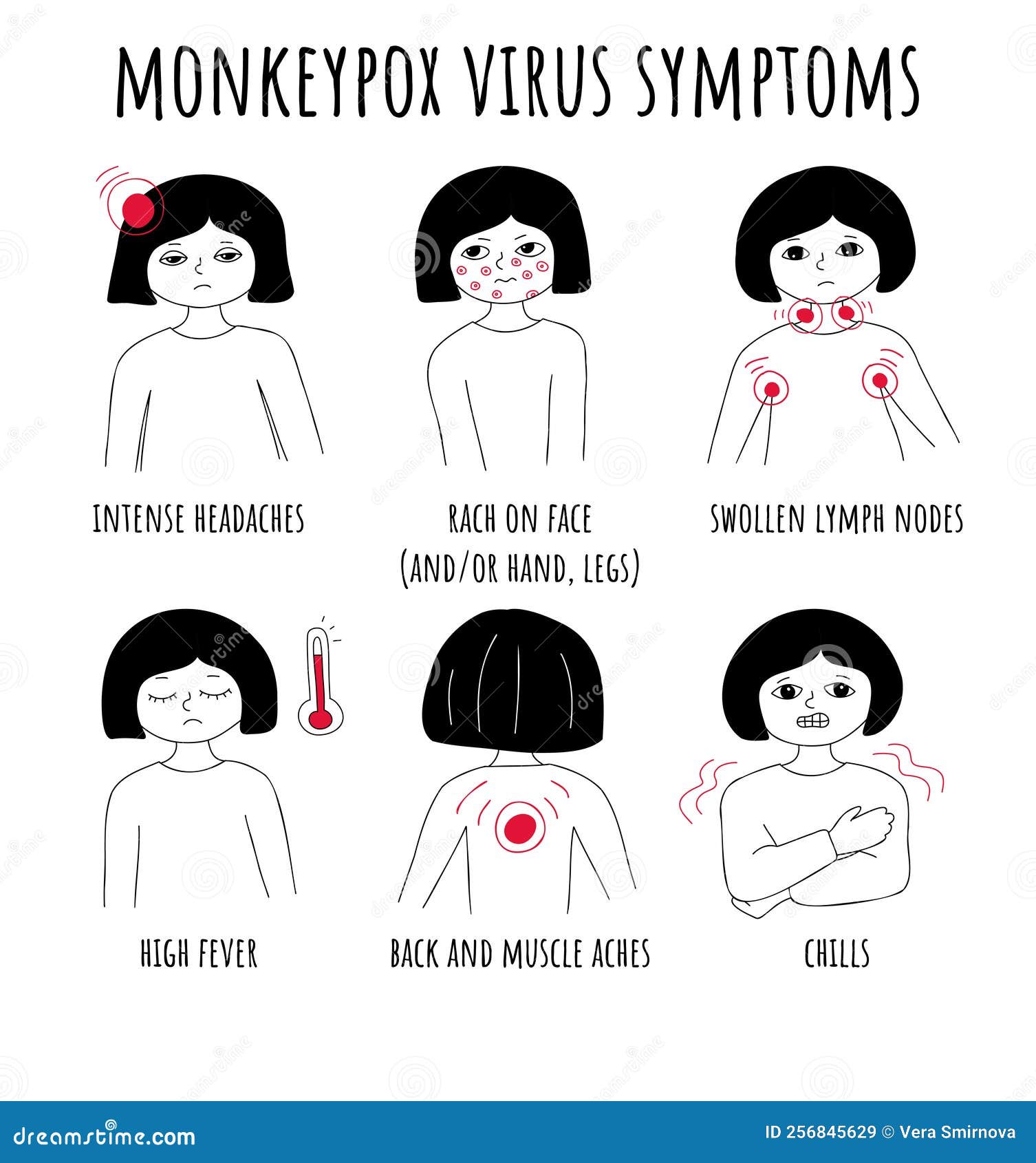
When to Seek Medical Attention for Swollen Lymph Nodes
While swollen lymph nodes are often harmless and resolve on their own, there are situations where medical attention is necessary. When should you be concerned about swollen lymph nodes in your armpit?
- The swelling persists for more than two weeks
- The lymph nodes continue to enlarge or become hard or fixed in place
- You experience unexplained weight loss, fever, or night sweats
- The skin over the lymph node becomes red or inflamed
- You have difficulty swallowing or breathing
- The swelling is accompanied by persistent pain or tenderness
If you experience any of these symptoms, it’s important to consult with a healthcare professional promptly. They can perform the necessary examinations and tests to determine the cause of the swelling and recommend appropriate treatment.
Understanding the potential causes and symptoms of swollen lymph nodes in the armpit can help you make informed decisions about your health. While often benign, persistent or concerning symptoms should always be evaluated by a medical professional to ensure proper diagnosis and treatment.
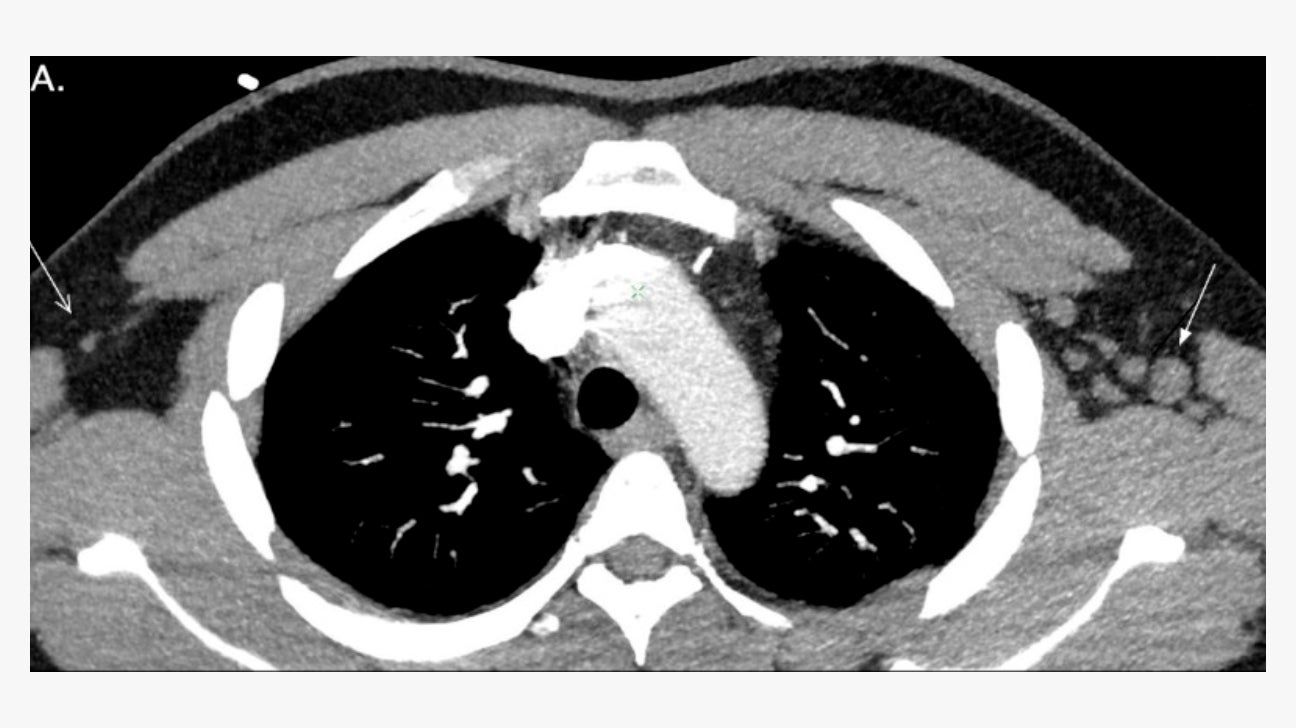
Swollen Lymph Nodes in the Armpit: Pictures, Treatments, & More
Swollen lymph nodes in the armpit may indicate an infection, injury, or disease that requires medical attention. However, it’s usually not a sign of cancer.
Read on to learn what it means to have swollen lymph nodes in your armpit.
Lymph nodes are critical parts of the immune system. They filter foreign substances from the body and store white blood cells called lymphocytes. Lymphocytes fight disease and infections.
You have hundreds of small bean-shaped lymph nodes throughout the body, including in your:
- neck
- armpit
- chest
- abdomen
- groin
A lymph node in the armpit that’s only slightly enlarged may be difficult to see, but you may be able to feel it with your fingers. A serious infection or other condition may cause one or more nodes to swell enough that you can see a lump under your skin.
Keep in mind that the armpit contains many nodes, so swelling could occur in the front, center, or back of the armpit, as well as along part of the upper arm near the armpit.
In addition to being swollen, an affected lymph node may also be sore or tender to the touch.
Share on PinterestCT scan showing swollen lymph nodes in armpit.
Ahn, R. W., Mootz, A. R., Brewington, C. C., & Abbara, S.
Share on PinterestSwollen lymph nodes in the armpit due to infection.
Casa nayafana/Shuuterstock
Share on PinterestEnlarged lymph nodes in the armpit due to tuberculosis.
Zay Nyi Nyi/Shutterstock
To check for a swollen lymph node in the armpit, lift your arm slightly and gently place your fingers into your armpit. Press your fingers against the center of the armpit and then around the front and back of the armpit along the chest wall. Do the same on the other side.
Lymph nodes exist in pairs on each side of the body, and typically only one node in a pair will be swollen. By comparing both sides, it may be a little easier to tell if one is enlarged.
If lymph nodes are swollen in more than one part of the body, the condition is known as generalized lymphadenopathy, which suggests a systemic illness.:max_bytes(150000):strip_icc()/armpitpainfinal-01-5c86a51446e0fb000133653f.png) Localized lymphadenopathy refers to swollen lymph node(s) in one location.
Localized lymphadenopathy refers to swollen lymph node(s) in one location.
The location of swollen lymph nodes usually suggests the cause of the problem. A swollen lymph node in the neck, for example, is often a sign of an upper respiratory infection.
When lymph nodes in the armpit become swollen, your body may be fighting a viral infection, or any of several other conditions. The potential causes of a swollen lymph node in the armpit can include:
Viral infection
Common viruses can trigger swelling in one or more lymph nodes in the armpit. They can include:
- flu
- common cold
- mononucleosis
More serious viral infections that may cause lymph node enlargement include herpes, rubella, and HIV.
These viruses may also cause lymph nodes in the neck to become enlarged, too. In many cases, rest, fluids, and time are all that you can do while your immune system fights off the virus. For certain viral infections, like HIV, antiviral medications may be necessary.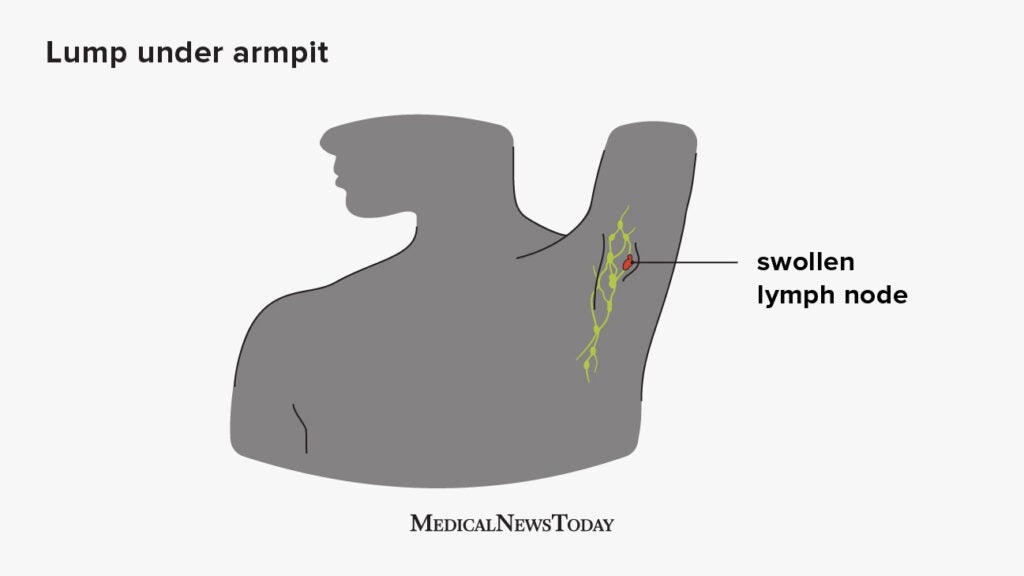
Bacterial infection
Some common bacterial infections on the arm or surrounding chest wall, including staphylococcus and streptococcus, can lead to an enlarged lymph node in the armpit and elsewhere in the body. Antibiotics and rest are usually enough to overcome a bacterial infection.
Immune system disorder
Flare-ups of autoimmune disorders, like lupus and rheumatoid arthritis, can cause temporary enlargement of the lymph nodes in an armpit. Treatments vary, depending on the cause, but anti-inflammatory medications, pain relievers, and in serious cases, immunosuppressant drugs may be necessary.
Cancer
Certain types of cancer directly involve the lymphatic system. Lymphoma actually originates in the lymph glands. Leukemia, a cancer of the blood cells, can cause inflammation and swelling of the lymph nodes.
Cancers that form in other organs or tissue may spread to the lymphatic system. Breast cancer, for example, can cause swelling of the lymph nodes in the armpit.
An enlarged lymph node near a cancerous tumor is often suspected of also being cancerous. Cancer treatments vary and may include chemotherapy, radiation therapy, surgery, and other approaches.
Medications
In rare cases, certain medications can cause lymph nodes to swell. Among them are:
- ACE inhibitors, beta blockers, and vasodilators to treat high blood pressure
- anticonvulsant drugs, including phenytoin and primidone
- anti-malarial drugs, including quinidine
- uric acid reducers, like allopurinol
Switching medications or adjusting doses may be enough to reduce side effects like lymph node enlargement.
As your body starts to successfully fight off the infection, the swelling in your lymph nodes should start to diminish.
With a typical bacterial infection, for example, a course of antibiotics should start to relieve lymph node swelling and other symptoms within a few days. A stubborn viral infection could take longer.
If your other symptoms are subsiding, but your lymph nodes remain swollen, tell a health professional. You may need additional treatment or a follow-up exam to see if there are other reasons your lymph nodes are still enlarged.
Because swollen lymph nodes are more often signs of an infection, rather than cancer, you may be inclined to dismiss swelling as a temporary symptom that’ll subside as you get over your infection. In many cases, that’s exactly what will happen.
If you’re unsure whether to seek a medical evaluation for swollen lymph nodes, these signs may be reasons to see a medical professional:
- One or more lymph nodes are swollen for no obvious reason.
- The swelling has lasted or gotten worse over a period of 2 or more weeks.
- The affected node feels hard and immovable when you press on it.
- The swollen lymph nodes aren’t painful.
- You have swollen lymph nodes in separate areas, like the armpit and groin.
- You have other symptoms, like:
- redness or fluid oozing around the node
- fever
- cough
- night sweats
- unexplained weight loss
- pain elsewhere in your body
Swollen lymph nodes typically get better once your illness has been treated or goes away on its own. To support your immune system as it responds to the infection or illness, you can rest and drink plenty of fluids. If you are prescribed medication, be sure to take it according to the prescribing doctor’s instructions.
To support your immune system as it responds to the infection or illness, you can rest and drink plenty of fluids. If you are prescribed medication, be sure to take it according to the prescribing doctor’s instructions.
If you feel discomfort or pain due to your swollen lymph node, you can try applying a warm compress to ease discomfort. Over-the-counter (OTC) pain medication, such as acetaminophen (Tylenol), may also help reduce pain.
If your pain gets worse or does not resolve, you may need to consult a doctor for additional treatment or testing.
Most of the time, a swollen lymph node means your body’s immune system is doing its job in responding to an infection or other health problem. That also means you’re dealing with an illness or injury that may require treatment.
If you’re battling a cold, for instance, and you notice slight swelling of a lymph node in your armpit, pay attention to it for a few days and see if the swelling goes down when you start feeling better.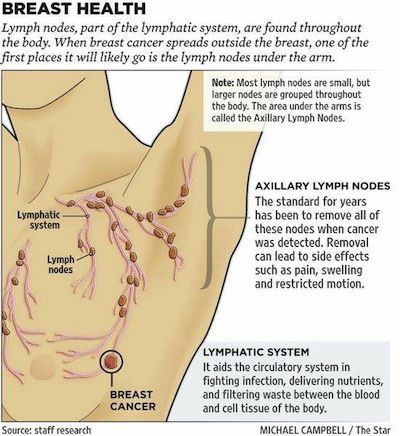
Unexplained swelling or the presence of other serious symptoms should prompt a visit with a health professional for a more complete evaluation.
Swollen Lymph Nodes in the Armpit: Pictures, Treatments, & More
Swollen lymph nodes in the armpit may indicate an infection, injury, or disease that requires medical attention. However, it’s usually not a sign of cancer.
Read on to learn what it means to have swollen lymph nodes in your armpit.
Lymph nodes are critical parts of the immune system. They filter foreign substances from the body and store white blood cells called lymphocytes. Lymphocytes fight disease and infections.
You have hundreds of small bean-shaped lymph nodes throughout the body, including in your:
- neck
- armpit
- chest
- abdomen
- groin
A lymph node in the armpit that’s only slightly enlarged may be difficult to see, but you may be able to feel it with your fingers. A serious infection or other condition may cause one or more nodes to swell enough that you can see a lump under your skin.
Keep in mind that the armpit contains many nodes, so swelling could occur in the front, center, or back of the armpit, as well as along part of the upper arm near the armpit.
In addition to being swollen, an affected lymph node may also be sore or tender to the touch.
Share on PinterestCT scan showing swollen lymph nodes in armpit.
Ahn, R. W., Mootz, A. R., Brewington, C. C., & Abbara, S.
Share on PinterestSwollen lymph nodes in the armpit due to infection.
Casa nayafana/Shuuterstock
Share on PinterestEnlarged lymph nodes in the armpit due to tuberculosis.
Zay Nyi Nyi/Shutterstock
To check for a swollen lymph node in the armpit, lift your arm slightly and gently place your fingers into your armpit. Press your fingers against the center of the armpit and then around the front and back of the armpit along the chest wall. Do the same on the other side.
Lymph nodes exist in pairs on each side of the body, and typically only one node in a pair will be swollen.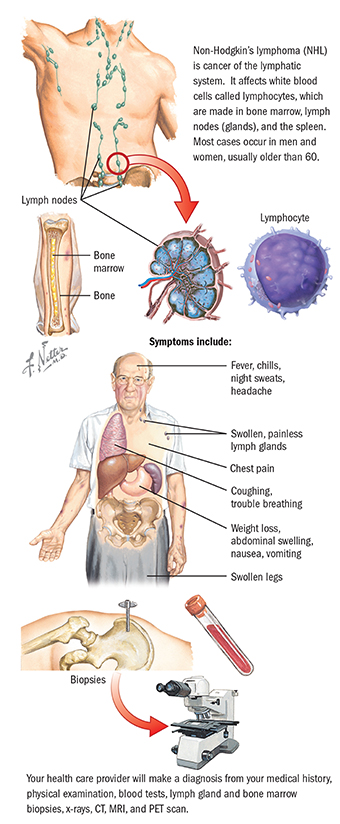 By comparing both sides, it may be a little easier to tell if one is enlarged.
By comparing both sides, it may be a little easier to tell if one is enlarged.
If lymph nodes are swollen in more than one part of the body, the condition is known as generalized lymphadenopathy, which suggests a systemic illness. Localized lymphadenopathy refers to swollen lymph node(s) in one location.
The location of swollen lymph nodes usually suggests the cause of the problem. A swollen lymph node in the neck, for example, is often a sign of an upper respiratory infection.
When lymph nodes in the armpit become swollen, your body may be fighting a viral infection, or any of several other conditions. The potential causes of a swollen lymph node in the armpit can include:
Viral infection
Common viruses can trigger swelling in one or more lymph nodes in the armpit. They can include:
- flu
- common cold
- mononucleosis
More serious viral infections that may cause lymph node enlargement include herpes, rubella, and HIV.
These viruses may also cause lymph nodes in the neck to become enlarged, too. In many cases, rest, fluids, and time are all that you can do while your immune system fights off the virus. For certain viral infections, like HIV, antiviral medications may be necessary.
In many cases, rest, fluids, and time are all that you can do while your immune system fights off the virus. For certain viral infections, like HIV, antiviral medications may be necessary.
Bacterial infection
Some common bacterial infections on the arm or surrounding chest wall, including staphylococcus and streptococcus, can lead to an enlarged lymph node in the armpit and elsewhere in the body. Antibiotics and rest are usually enough to overcome a bacterial infection.
Immune system disorder
Flare-ups of autoimmune disorders, like lupus and rheumatoid arthritis, can cause temporary enlargement of the lymph nodes in an armpit. Treatments vary, depending on the cause, but anti-inflammatory medications, pain relievers, and in serious cases, immunosuppressant drugs may be necessary.
Cancer
Certain types of cancer directly involve the lymphatic system. Lymphoma actually originates in the lymph glands. Leukemia, a cancer of the blood cells, can cause inflammation and swelling of the lymph nodes.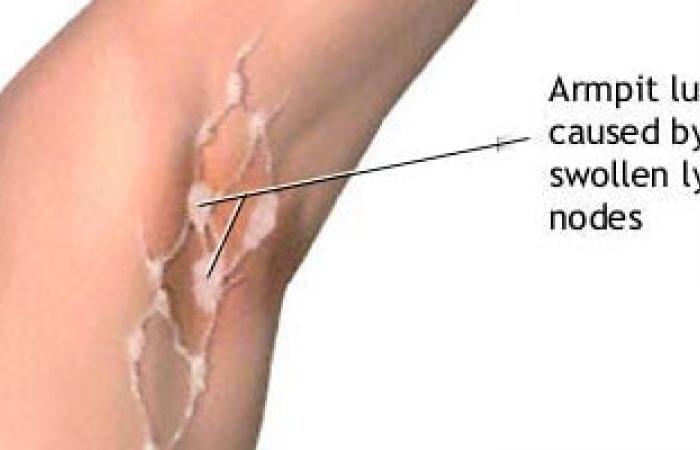
Cancers that form in other organs or tissue may spread to the lymphatic system. Breast cancer, for example, can cause swelling of the lymph nodes in the armpit.
An enlarged lymph node near a cancerous tumor is often suspected of also being cancerous. Cancer treatments vary and may include chemotherapy, radiation therapy, surgery, and other approaches.
Medications
In rare cases, certain medications can cause lymph nodes to swell. Among them are:
- ACE inhibitors, beta blockers, and vasodilators to treat high blood pressure
- anticonvulsant drugs, including phenytoin and primidone
- anti-malarial drugs, including quinidine
- uric acid reducers, like allopurinol
Switching medications or adjusting doses may be enough to reduce side effects like lymph node enlargement.
As your body starts to successfully fight off the infection, the swelling in your lymph nodes should start to diminish.
With a typical bacterial infection, for example, a course of antibiotics should start to relieve lymph node swelling and other symptoms within a few days. A stubborn viral infection could take longer.
A stubborn viral infection could take longer.
If your other symptoms are subsiding, but your lymph nodes remain swollen, tell a health professional. You may need additional treatment or a follow-up exam to see if there are other reasons your lymph nodes are still enlarged.
Because swollen lymph nodes are more often signs of an infection, rather than cancer, you may be inclined to dismiss swelling as a temporary symptom that’ll subside as you get over your infection. In many cases, that’s exactly what will happen.
If you’re unsure whether to seek a medical evaluation for swollen lymph nodes, these signs may be reasons to see a medical professional:
- One or more lymph nodes are swollen for no obvious reason.
- The swelling has lasted or gotten worse over a period of 2 or more weeks.
- The affected node feels hard and immovable when you press on it.
- The swollen lymph nodes aren’t painful.
- You have swollen lymph nodes in separate areas, like the armpit and groin.

- You have other symptoms, like:
- redness or fluid oozing around the node
- fever
- cough
- night sweats
- unexplained weight loss
- pain elsewhere in your body
Swollen lymph nodes typically get better once your illness has been treated or goes away on its own. To support your immune system as it responds to the infection or illness, you can rest and drink plenty of fluids. If you are prescribed medication, be sure to take it according to the prescribing doctor’s instructions.
If you feel discomfort or pain due to your swollen lymph node, you can try applying a warm compress to ease discomfort. Over-the-counter (OTC) pain medication, such as acetaminophen (Tylenol), may also help reduce pain.
If your pain gets worse or does not resolve, you may need to consult a doctor for additional treatment or testing.
Most of the time, a swollen lymph node means your body’s immune system is doing its job in responding to an infection or other health problem. That also means you’re dealing with an illness or injury that may require treatment.
That also means you’re dealing with an illness or injury that may require treatment.
If you’re battling a cold, for instance, and you notice slight swelling of a lymph node in your armpit, pay attention to it for a few days and see if the swelling goes down when you start feeling better.
Unexplained swelling or the presence of other serious symptoms should prompt a visit with a health professional for a more complete evaluation.
Why lymph nodes increase – articles Lab4u.RU
- May 31, 2021
- Author: Anna Fedortsova
The body is one big system. It consists of many small ones, one of which is lymphatic.
It performs three important functions:
- Maintains fluid balance between blood and tissues
- helps protect against bacteria and other intruders, is part of the immune system
- is involved in the absorption of fats and fat-soluble nutrients in the digestive system
It consists of vessels, ducts, nodes and other tissues.
There are three types of vessels in the lymphatic system:
- milky. Very small, absorb fats and fat-soluble nutrients from the intestines
- superficial – originate just under the skin. They tend to flow parallel to the veins. Over time, they fall into deep vessels
- deep – pump lymph in deeper places, follow the path of deep arteries
Lymph flows through these vessels – a transparent white liquid, consisting of leukocytes and intestinal fluid, which consists of proteins and fats – chyle. It forms when fluid leaves the capillaries due to pressure. Approximately 10% of the blood volume becomes lymph. Unlike blood, it is not pumped, but squeezed out through the vessels when we use the muscles. Moreover, there are practically no walls in the lymphatic vessels – one name.
The place where the lymphatic vessels branch out is called the nodes. They are like soft, small beans. Someone calls them glands, do not repeat after these ignoramuses: glands can only be endocrine.
In the lymph nodes, immune cells evaluate for the presence of foreign materials. In total, we have more than 600 nodes inside us, and everyone can react to the invader.
Lymph is gradually squeezed out to two main channels – the lymphatic ducts:
- the right duct drains lymph from the upper right quadrant of the body: the right sides of the head, neck, arm and chest
- the thoracic duct is much larger. It drains lymph from the rest of the body.
These two ducts with already filtered lymph flow into the veins under the collarbones.
There are a couple of organs that also belong to the lymphatic system: tonsils, spleen, thymus, bone marrow, fetal liver.
We are constantly attacked by dangerous microorganisms. First line of defense:
- physical barrier, e.g. skin
- toxic barrier, eg stomach acid
- good bacteria in the body⠀
However, pathogens often manage to enter the body. In this case, the lymphatic system gives the command to the immune system.
In this case, the lymphatic system gives the command to the immune system.
The lymphatic system produces two types of lymphocytes: T cells and B cells.
They reach the lymph nodes, are filtered and activated upon contact with harmful organisms. From this stage, pathogens or invaders are declassified and become known as antigens.⠀
When lymphocytes are activated, they form antibodies and begin to protect the body. They can also produce antibodies from memory if they have already encountered a particular pathogen in the past.
Activated lymphocytes pass further along the lymphatic system and enter the bloodstream. They are now ready to spread the immune response throughout the body through the circulation.⠀
Most of the lymph nodes are in the neck, armpits and groin. They increase for two reasons:
- reaction to infection – foreign material enters the immune cells through the lymph that is excreted from the infected tissue.

- direct infection of the lymph nodes – the nodes themselves can become infected and inflamed (lymphadenitis).⠀
Lymph nodes collect information from the bottom up. Inflammation suggests:
- elbow lymph nodes – you need to look for scratches on the hands (maybe you have a cat?) and this is cat scratch disease
- axillary lymph nodes – women should pay attention to the chest
- submandibular lymph nodes – check throat: sore throat, chronic tonsillitis, pharyngitis
- occipital lymph nodes – sign of rubella
- inguinal lymph nodes – worth checking for STIs
- popliteal and inguinal lymph nodes, with swelling of the legs – vein diseases, diabetes mellitus
If the lymph nodes are swollen with a cold or flu, you don’t have to worry about the doctor, it will pass along with the flu.
When to see a doctor?
lymph nodes remain swollen for longer than 1-2 weeks
the enlarged lymph node is hard or cannot be moved
other than swelling, there is fever, itching, sweating, or unexplained weight loss
How to treat lymph nodes under the arms
Yana Kachinskaya
Posted
Text: Yana Kachinskaya
immunity infection life hack lymph nodes folk medicine
Like it?
Share with your friends!
The lymphatic system is responsible for stable immunity and fights against infectious diseases.
The lymphatic system is one of the most important in the body. She is responsible for stable immunity and fights against infectious diseases. Nodules become inflamed due to hypothermia, trauma, poor hygiene, as well as infections and more serious causes. An accurate diagnosis can only be made by a doctor based on the results of tests, and treatment already depends on this.
Why do the lymph nodes under the armpits become inflamed?
Inflammation of the lymph nodes is called lymphadentitis. Most often, the lymph nodes become inflamed due to staphylococci, streptococci and E. coli. If too many bacteria accumulate in the body, and the lymphatic system can no longer cope with them, its nodes accumulate pathogens and become inflamed.
Axillary lymph nodes become inflamed due to a variety of reasons. For example, with a disease of the mammary glands, during a cold, infectious or oncological diseases. Furunculosis, increased work of the sweat glands, colds and respiratory diseases, allergies, and intoxications can also be factors.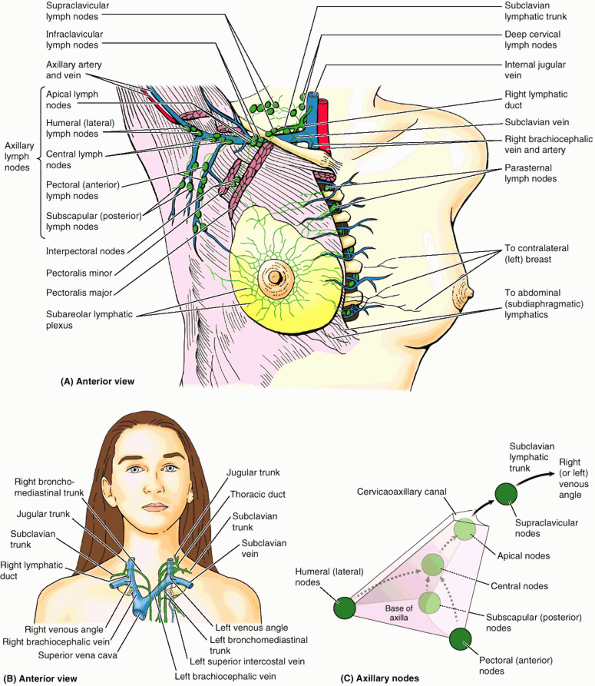
Sometimes one lymph node becomes inflamed, sometimes lymph nodes all over the body become inflamed. Sometimes they increase so much that they become sensitive and painful. Those that appear in the armpits ache, blush and swell. Inflammation can be accompanied by weakness in the body, nausea, vomiting, drowsiness and headache.
How to treat swollen lymph nodes?
In order to relieve inflammation of the lymph nodes, you need to find out what caused them to change their size and cure this cause. For example, a cold or an infectious disease.
Treatment for lymphadentitis includes compresses with ichthyol ointment and dimexide, physiotherapy, antibacterial drugs. The patient is prescribed bed rest and prohibit any activity.
If the lymph nodes periodically become inflamed in the armpits, it is necessary to increase immunity. This can be done with the help of traditional medicine. A popular life hack is to drink Echinacea tincture . It is taken before meals with a small amount of water.
It is taken before meals with a small amount of water.
A tincture or freshly squeezed aloe juice will do . Ninety milliliters of juice should be mixed with three tablespoons of liquid honey and three tablespoons of red wine. Mix thoroughly and put in a dry, dark place for two days. The resulting tincture can be taken every morning, one teaspoon.
Inflamed lymph nodes are treated calendula tincture . It is necessary to grind dry flowers, pour them with boiling water and let it brew for about ten to fifteen minutes. The resulting infusion is taken up to five times a day before meals. The course lasts ten days.
In the treatment of lymphadenitis, use garlic . Two crushed heads are poured with one liter of boiling water and infused for six to eight hours. Take a teaspoon before meals up to four times a day for five days.
In case of inflamed lymph nodes, it is advised to drink beetroot juice — 100-120 ml on an empty stomach during a week.


